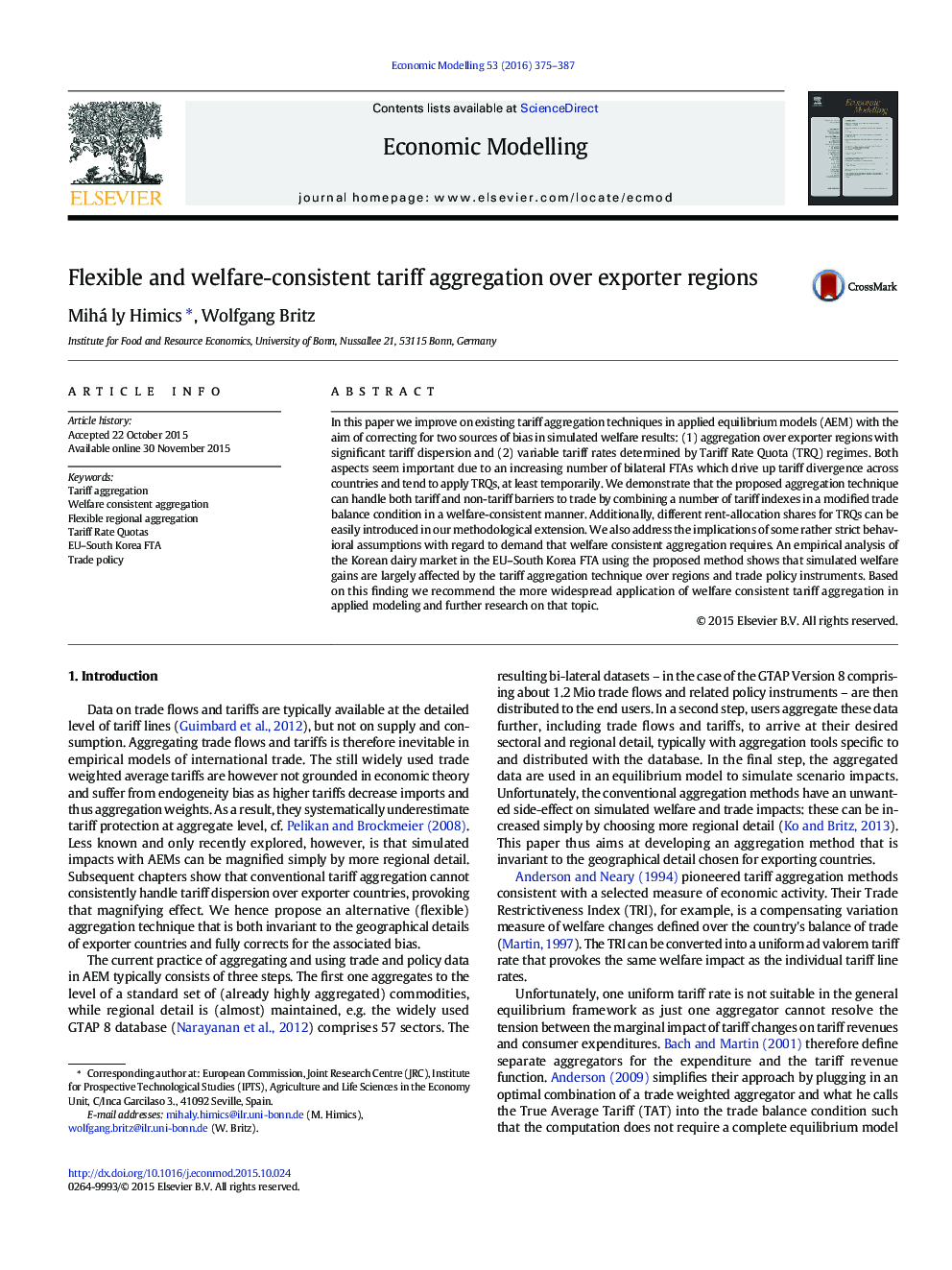| Article ID | Journal | Published Year | Pages | File Type |
|---|---|---|---|---|
| 5053618 | Economic Modelling | 2016 | 13 Pages |
Abstract
In this paper we improve on existing tariff aggregation techniques in applied equilibrium models (AEM) with the aim of correcting for two sources of bias in simulated welfare results: (1) aggregation over exporter regions with significant tariff dispersion and (2) variable tariff rates determined by Tariff Rate Quota (TRQ) regimes. Both aspects seem important due to an increasing number of bilateral FTAs which drive up tariff divergence across countries and tend to apply TRQs, at least temporarily. We demonstrate that the proposed aggregation technique can handle both tariff and non-tariff barriers to trade by combining a number of tariff indexes in a modified trade balance condition in a welfare-consistent manner. Additionally, different rent-allocation shares for TRQs can be easily introduced in our methodological extension. We also address the implications of some rather strict behavioral assumptions with regard to demand that welfare consistent aggregation requires. An empirical analysis of the Korean dairy market in the EU-South Korea FTA using the proposed method shows that simulated welfare gains are largely affected by the tariff aggregation technique over regions and trade policy instruments. Based on this finding we recommend the more widespread application of welfare consistent tariff aggregation in applied modeling and further research on that topic.
Keywords
Related Topics
Social Sciences and Humanities
Economics, Econometrics and Finance
Economics and Econometrics
Authors
Mihály Himics, Wolfgang Britz,
